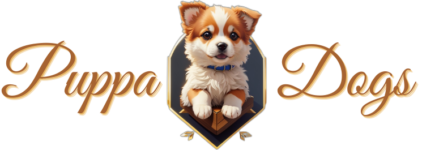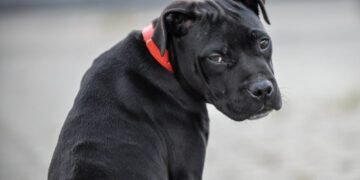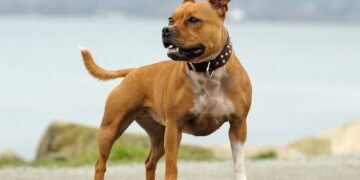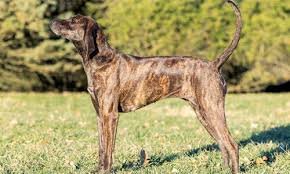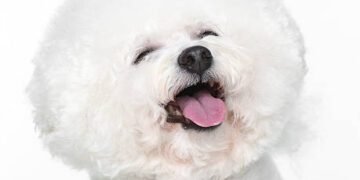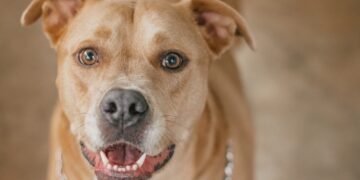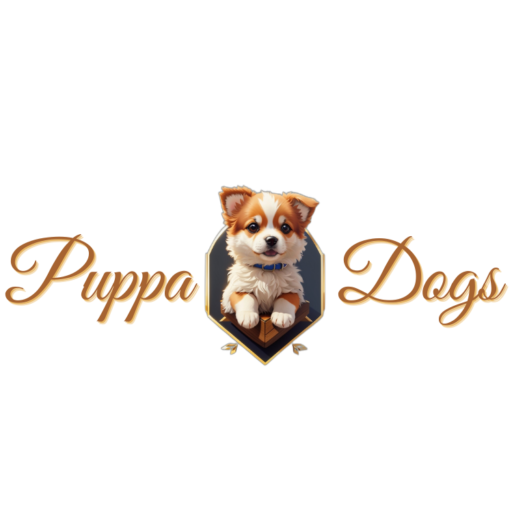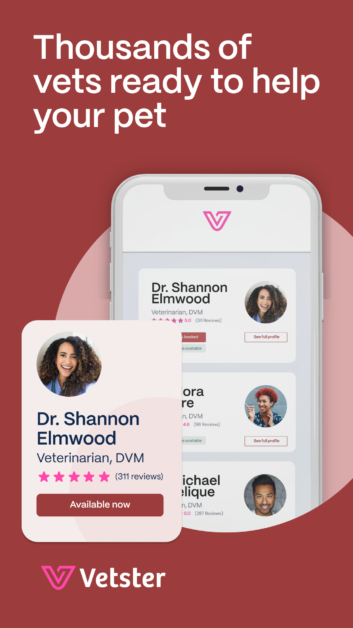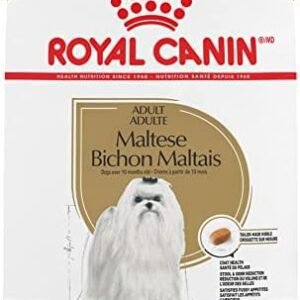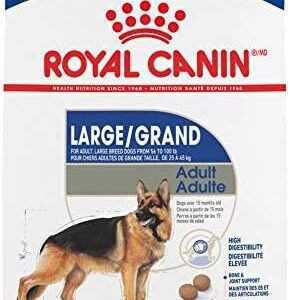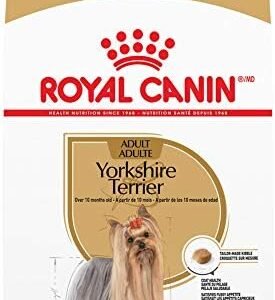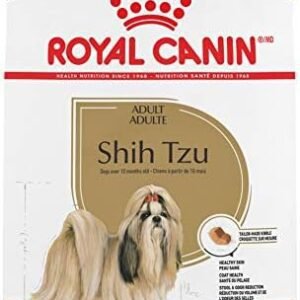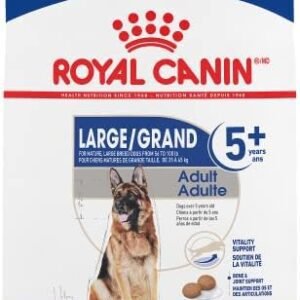Introduction
Is there anything more comforting than a steaming bowl of noodles? Whether it’s a heaping plate of spaghetti, a fragrant bowl of ramen, or the timeless appeal of macaroni and cheese, noodles are a beloved staple in many households. As we indulge in these delicious dishes, we often find ourselves sharing bites with our furry companions, who eagerly await a morsel from our plates. But have you ever wondered, can dogs eat noodles?

In this article, we embark on a culinary journey to explore the world of noodles and its compatibility with our four-legged friends. We’ll navigate through the intricacies of canine diets, understanding which human foods can be safely shared with your dog, and which should be avoided. With tails wagging and curiosity piqued, let’s dive into the world of noodles and canine companionship.
Our main purpose in this blog post is to answer the pivotal question: can dogs eat noodles? But that’s not all. We’re here to unravel the intricacies surrounding this delectable food, discussing the advantages and drawbacks of introducing noodles to your dog’s diet. We’ll explore how much is too much, the potential risks involved, and provide you with guidance on what to do if your dog devours a part of this beloved food that might not be suitable for their consumption. So, fasten your seatbelts, and let’s embark on this culinary adventure to discover the truth about noodles and our canine friends.
Table of Contents
Can Dogs Eat Noodles?
When it comes to sharing our favorite human foods with our dogs, the question of whether noodles are a safe choice often arises. Let’s delve into this culinary conundrum and understand if dogs can indeed enjoy this popular dish.
Noodles and Safety for Dogs
First and foremost, it’s crucial to establish that plain, cooked noodles, such as pasta, are not inherently toxic or dangerous to dogs. These noodles are typically made from basic ingredients like wheat flour, water, and sometimes eggs. In their simplest form, noodles do not contain harmful components like onions, garlic, or excessive spices that are known to be harmful to dogs. As a result, plain noodles can be considered generally safe for canine consumption.
The Nutritional Facts
To determine if noodles can be a part of your dog’s diet, it’s essential to understand their nutritional profile. Noodles are primarily composed of carbohydrates, which provide energy. In the table below, we outline the approximate nutritional content of plain cooked noodles (per 100g) to give you a better understanding of what they offer:
| Nutrient | Amount per 100g |
|---|---|
| Calories | 138 kcal |
| Carbohydrates | 25.2g |
| Protein | 4.5g |
| Fat | 1.2g |
| Fiber | 1.2g |
| Vitamins | |
| – Thiamine (B1) | 0.088mg |
| – Riboflavin (B2) | 0.042mg |
| – Niacin (B3) | 3.138mg |
| – Folate (B9) | 75μg |
| Minerals | |
| – Calcium | 11mg |
| – Iron | 0.82mg |
| – Magnesium | 13mg |
| – Phosphorus | 35mg |
| – Potassium | 26mg |
| – Sodium | 1mg |
| – Zinc | 0.44mg |
As we can see, noodles provide a decent amount of carbohydrates, which can offer an energy boost. They also contain modest levels of protein, vitamins from the B-group, and several minerals, albeit in relatively small quantities. However, while these nutrients are part of the noodle’s nutritional profile, it’s important to remember that dogs have unique dietary requirements. Carbohydrates are not the primary source of energy for canines, and their nutritional needs differ from ours.
The Pros and Cons
Like any food, noodles have both advantages and disadvantages when it comes to including them in your dog’s diet. Let’s weigh these factors:
Advantages:
Safe Ingredients: Plain cooked noodles typically contain safe and simple ingredients that won’t harm your dog.
Energy Boost: Noodles are rich in carbohydrates, providing a quick energy source, which can be beneficial for active dogs.
Palatability: Dogs may enjoy the taste and texture of noodles, making them a flavorful treat.
Drawbacks:
Limited Nutritional Value: While noodles contain carbohydrates and some nutrients, they do not meet the essential nutritional requirements of dogs. They should not replace your dog’s primary diet.
Allergies and Sensitivities: Some dogs may be sensitive or allergic to ingredients in noodles, particularly wheat. If your dog has allergies or sensitivities, it’s best to avoid noodles.
Excessive Calories: Noodles are calorie-dense, and excessive consumption can lead to weight gain. It’s crucial to moderate portions.
In summary, noodles themselves are not toxic to dogs and can be consumed safely in moderation. However, their limited nutritional value means they should only be an occasional treat and not a staple in your dog’s diet. It’s also vital to consider any specific dietary needs or sensitivities your dog may have before introducing noodles into their meals.
How much Noodles Can a Dog Eat?
The Art of Moderation
When it comes to treating your canine companion with noodles, moderation is the golden rule. While noodles can be a safe and enjoyable addition to your dog’s diet, it’s essential to exercise caution and ensure they do not make up more than a certain percentage of your dog’s daily calorie intake.
Start Small and Observe
Before you introduce noodles into your dog’s diet, it’s a good practice to start with a small serving and closely observe their reaction. Just like people, individual dogs may have varying tolerances and preferences. Feeding them a small amount initially allows you to gauge their response and make any necessary adjustments.
Proper Preparation
How you prepare the noodles is another aspect to consider. The noodles should be cooked thoroughly and served without any sauces, seasonings, or additives. While a plain, boiled noodle is the ideal option, it’s important to ensure they are not overly cooked to the point of becoming mushy, as dogs typically enjoy a bit of texture.
Sizing Up Your Dog
The size and breed of your dog play a role in determining the portion size they can tolerate. Large dogs, such as Golden Retrievers or German Shepherds, generally have more significant caloric requirements and can, therefore, consume larger portions compared to smaller breeds like Chihuahuas or Dachshunds.
Appropriate Serving Sizes
It’s crucial to understand how much noodles your dog can safely consume based on their weight. Here’s a general guideline to provide you with a starting point:
- Small Dogs (under 20 lbs): No more than a few small pieces or a teaspoon-sized serving.
- Medium-Sized Dogs (20-50 lbs): Up to a quarter of a cup.
- Large Dogs (50-100 lbs): Half a cup to a cup.
- Giant Breeds (100+ lbs): Up to two cups.
Remember, these are general serving sizes, and your dog’s specific needs may vary based on factors like activity level, age, and metabolism. It’s crucial to keep a close eye on your dog’s weight and adjust the portion size accordingly. Be sure to account for any additional treats or dietary items your dog consumes throughout the day to avoid overfeeding.
As with any treat or addition to your dog’s diet, it’s essential to strike a balance. While they can enjoy the occasional noodle, overindulgence can lead to excess calories and potential weight gain. Additionally, always consult your veterinarian if you have any concerns about your dog’s dietary requirements, especially if they have specific health conditions or dietary restrictions.
By following these guidelines, you can ensure that noodles remain a delightful and safe treat for your furry friend.
What Are the Risks of Feeding Noodles to Dogs?
Noodles can be a tasty addition to your dog’s diet, but like any food, they come with potential risks. It’s essential to be aware of these risks to ensure your canine companion’s health and well-being.
Food Allergies
Just as people can be allergic to certain foods, dogs can also develop food allergies or sensitivities. Some dogs may have allergies to ingredients commonly found in noodles, such as wheat or eggs. Allergic reactions can manifest in various ways, including skin irritations, itching, gastrointestinal distress, and more. If your dog has a history of food allergies, it’s especially important to consult your veterinarian before introducing noodles into their diet.
Signs of Food Intolerance
Food intolerance is another concern when feeding noodles to dogs. While food allergies typically involve the immune system, food intolerance occurs when a dog’s digestive system has difficulty processing a particular ingredient. Common short-term signs of food intolerance can include:
Gastrointestinal Distress: Dogs with food intolerance may experience stomach upset, including vomiting or diarrhea, after consuming certain ingredients in noodles.
Excessive Gas: Dogs may develop flatulence or excessive gas if they have difficulty digesting specific components in noodles.
Abdominal Discomfort: Some dogs may show signs of abdominal discomfort or pain after eating foods that don’t agree with their digestive system.
Hazards of Certain Noodle Components
While plain, cooked noodles are generally safe for dogs, some types of noodles or specific ingredients can pose hazards. For example:
Sauces and Seasonings: Noodles are often served with sauces and seasonings that are not suitable for dogs. Ingredients like garlic or onion in sauces can be toxic to dogs, leading to symptoms like lethargy, vomiting, and gastrointestinal issues.
Salt Content: High-sodium content in noodles can lead to sodium ion poisoning in dogs, resulting in excessive thirst, frequent urination, and, in severe cases, seizures and organ damage.
Spicy Flavors: Spicy noodles or those with hot seasonings can upset a dog’s stomach, causing discomfort and gastrointestinal distress.
- Fat Content: Some noodles may be prepared with high-fat ingredients, which can lead to pancreatitis in dogs. This condition can cause severe abdominal pain, vomiting, and diarrhea.
Watch for Allergic Reactions
As a responsible pet owner, you should be vigilant for signs of allergic reactions or adverse responses when introducing noodles to your dog’s diet. Common signs of adverse reactions may include:
Itching and Skin Irritations: Dogs may scratch excessively, develop rashes, or show signs of discomfort through constant licking.
Digestive Distress: Vomiting, diarrhea, or changes in stool consistency can indicate that noodles are not agreeing with your dog’s stomach.
Lethargy and Behavioral Changes: If your dog becomes unusually lethargic, displays unusual behavior, or appears in pain, it could be a sign of an adverse reaction.
- Swelling: Swelling of the face, lips, or other body parts can indicate an allergic reaction and may be a medical emergency.
If you notice any of these signs or symptoms, discontinue feeding noodles immediately and consult your veterinarian. They can help determine the cause of the reaction and provide guidance on managing it. If your dog has a history of allergies or adverse reactions to certain foods, it’s advisable to consult your vet before offering noodles.
While noodles can be a tasty treat for your dog, it’s vital to remain cautious and attentive to their response, ensuring that any potential risks are minimized.
How to Feed Noodles to Your Dog and Make It More Enjoyable for Them
Feeding noodles to your dog can be a delightful experience for both you and your furry friend. It’s essential to provide this treat in a safe and enjoyable way to ensure that your dog receives the full benefits of the experience. Here, we’ll explore various ways to feed noodles to your dog and share some creative ideas to enhance their dining experience.
Feeding Noodles to Your Dog
When offering noodles to your dog, it’s crucial to prepare them in a way that is safe and enjoyable for your pet. Here are some tips to keep in mind:
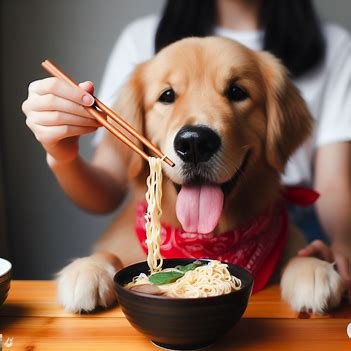
Plain, Cooked Noodles: The safest and most straightforward way to feed noodles to your dog is by offering plain, cooked noodles without any seasonings, sauces, or additives. These noodles should be free of salt, spices, and potentially harmful ingredients.
Serve in Small Portions: Always start with small portions to observe how your dog reacts. Some dogs may have sensitive stomachs and could be prone to digestive upset if they consume too much too quickly.
Cooked and Unseasoned: Ensure the noodles are well-cooked and unseasoned. Avoid using oil, butter, salt, or other seasonings that can be harmful to dogs.
Cut into Bite-Sized Pieces: For ease of consumption, cut the noodles into bite-sized pieces that are appropriate for your dog’s size. Smaller dogs may need smaller pieces, while larger dogs can manage larger ones.
Monitor Your Dog: While your dog is enjoying their noodles, keep an eye on them. This will allow you to ensure that they are eating safely and not gulping down large portions that could lead to choking or gastrointestinal distress.
Homemade Treats and Snacks
Noodles can also be incorporated into homemade dog treats or snacks to make mealtime more enjoyable. Here are some creative ideas:
Noodle Bites: Create small noodle bites by mixing cooked noodles with other dog-friendly ingredients such as lean ground meat, carrots, peas, or unsalted chicken broth. Form them into bite-sized treats and bake until they are firm. These homemade noodle bites can be a delightful snack for your dog.
Frozen Noodle Pops: Make refreshing frozen treats by blending cooked noodles with plain yogurt, unsalted chicken broth, and a small amount of honey. Pour the mixture into ice cube trays and freeze until solid. These noodle pops are perfect for hot days and offer a cool, tasty treat for your pup.
Noodle Stir-Fry: Prepare a dog-friendly noodle stir-fry by combining plain, cooked noodles with cooked chicken or lean ground meat and a medley of dog-safe vegetables. Avoid using seasonings and sauces that could be harmful to dogs. This dish can be a satisfying meal for your dog.
- Stuffed Kong Toy: Fill a Kong toy with plain, cooked noodles and a few pieces of your dog’s favorite treats. This interactive toy provides mental stimulation as your dog works to get the noodles out.
Recipes for Homemade Noodle Treats
Here are a couple of simple recipes for homemade noodle treats:
Noodle Delight Bites:
Ingredients:
- 1 cup plain, cooked noodles
- 1/2 cup lean ground meat (beef, chicken, turkey)
- 1/4 cup finely chopped carrots
- 1 egg
- 1/4 cup finely chopped parsley (for fresh breath)
Instructions:
- Preheat your oven to 350°F (180°C).
- In a bowl, combine the cooked noodles, cooked ground meat, chopped carrots, egg, and chopped parsley.
- Mix all the ingredients thoroughly.
- Form the mixture into small, bite-sized balls.
- Place the balls on a baking sheet.
- Bake in the preheated oven for about 20 minutes or until they are firm.
- Allow them to cool completely before offering them to your dog.
Noodle and Veggie Stir-Fry:
Ingredients:
- 1 cup plain, cooked noodles
- 1/2 cup cooked chicken, shredded
- 1/4 cup peas
- 1/4 cup carrots, thinly sliced
- 1/4 cup broccoli florets
Instructions:
- In a pan, combine the cooked noodles, cooked chicken, peas, carrots, and broccoli.
- Gently stir-fry the ingredients over low heat until they are well combined.
- Allow the stir-fry to cool before serving it to your dog.
These homemade noodle treats can add variety to your dog’s diet and make mealtime more exciting. Keep in mind that while treats and snacks can be enjoyable, they should not replace your dog’s primary, balanced diet. Always consult with your veterinarian if you have concerns about your dog’s specific dietary needs or if you are introducing new foods into their diet.
10 FAQs About Dogs Eating Noodles
In this section, we will address some of the most common questions dog owners have when it comes to feeding noodles to their furry companions. These FAQs will help you better understand how noodles can be a part of your dog’s diet and the precautions you should take.
1. Can dogs eat any type of noodles?
Dogs can safely eat plain, cooked noodles without seasonings or additives. It’s crucial to avoid noodles with added salt, spices, sauces, or any ingredients that may be harmful to dogs.
2. Can dogs eat raw noodles?
No, it is not advisable to feed your dog raw noodles. Uncooked noodles can be challenging to digest and may cause gastrointestinal issues. Always ensure that noodles are properly cooked before offering them to your pet.
*3. Can dogs eat instant noodles or ramen?
Instant noodles and ramen are typically high in sodium and often contain seasonings that are not suitable for dogs. It’s best to avoid these types of noodles or, at the very least, remove the flavoring packets before serving.
4. Are egg noodles safe for dogs?
Egg noodles, when plain and cooked, can be safe for dogs. Like any other type of noodles, make sure they are not seasoned or covered in sauces that contain harmful ingredients.
5. How much plain, cooked noodles can I feed my dog?
Moderation is key when it comes to feeding noodles to dogs. It’s recommended to start with a small portion and observe your dog’s reaction. The exact amount will depend on your dog’s size, but noodles should not make up more than a small part of their daily calorie intake.
*6. Can dogs eat noodles with butter?
Plain noodles with a small amount of unsalted butter can be a safe treat for dogs. However, it’s essential to use butter in moderation, as it is calorie-dense. Too much butter can lead to weight gain.
*7. Can noodles be included in homemade dog treats?
Yes, noodles can be included in homemade dog treats, but it’s crucial to ensure that the noodles are plain and unseasoned. Incorporate them into treats along with other dog-safe ingredients like lean meats and vegetables.
*8. Can my dog eat noodle soups?
Noodle soups, especially those made with a rich broth or heavy seasonings, are not recommended for dogs. These soups can contain ingredients that are harmful to pets. Stick to plain, cooked noodles without any broth or seasonings.
*9. Are there any allergies or sensitivities related to noodles?
While most dogs can safely consume plain, cooked noodles, there is always the possibility of individual allergies or sensitivities. It’s essential to monitor your dog after introducing noodles into their diet and watch for signs of adverse reactions.
*10. What should I do if my dog eats seasoned or salty noodles by mistake?
If your dog consumes seasoned or salty noodles by accident, monitor them for signs of discomfort, such as excessive thirst or vomiting. Provide plenty of fresh water, as they may be thirsty due to the increased salt intake. If you notice severe symptoms or prolonged discomfort, contact your veterinarian for guidance.
In conclusion, while dogs can enjoy plain, cooked noodles as an occasional treat, it’s crucial to be mindful of the ingredients and seasonings used. Always prioritize your dog’s safety and well-being by offering them food that aligns with their dietary needs. If you have any concerns about specific foods in your dog’s diet, consult your veterinarian for professional advice.
Conclusion
In conclusion, the question of whether dogs can eat noodles has been thoroughly explored. Dogs can safely enjoy plain, cooked noodles in moderation as an occasional treat. It’s essential to choose noodles without harmful seasonings or additives and to be mindful of portion sizes, considering your dog’s size and individual needs.
Noodles themselves offer some nutritional benefits, providing carbohydrates for energy. However, they should never replace your dog’s primary diet, which should consist of high-quality dog food specifically designed to meet their nutritional requirements.
While plain noodles can be a delightful treat for your dog, it’s vital to avoid seasoned or salty noodles and, in particular, instant noodles with flavoring packets. These often contain high levels of sodium and seasonings that can be harmful to dogs.
If you decide to incorporate noodles into homemade treats or snacks for your dog, ensure that they are plain and unseasoned. This allows you to get creative and provide your furry friend with an occasional tasty delight.
As always, remember that every dog is unique, and individual sensitivities or allergies can occur. Therefore, it’s essential to observe your dog after introducing any new food into their diet.
If you have any questions or concerns about your dog’s dietary choices or behavior, don’t hesitate to consult your veterinarian. They can provide expert guidance to ensure your dog’s health and well-being. Your dog’s safety and happiness should be the top priority when sharing tasty treats with them.
Do you have any questions or stories to share about your dog’s noodle experiences? We’d love to hear from you in the comment section below or on our social media pages. Your insights and anecdotes can be valuable for other dog owners seeking advice on their pets’ dietary choices.
